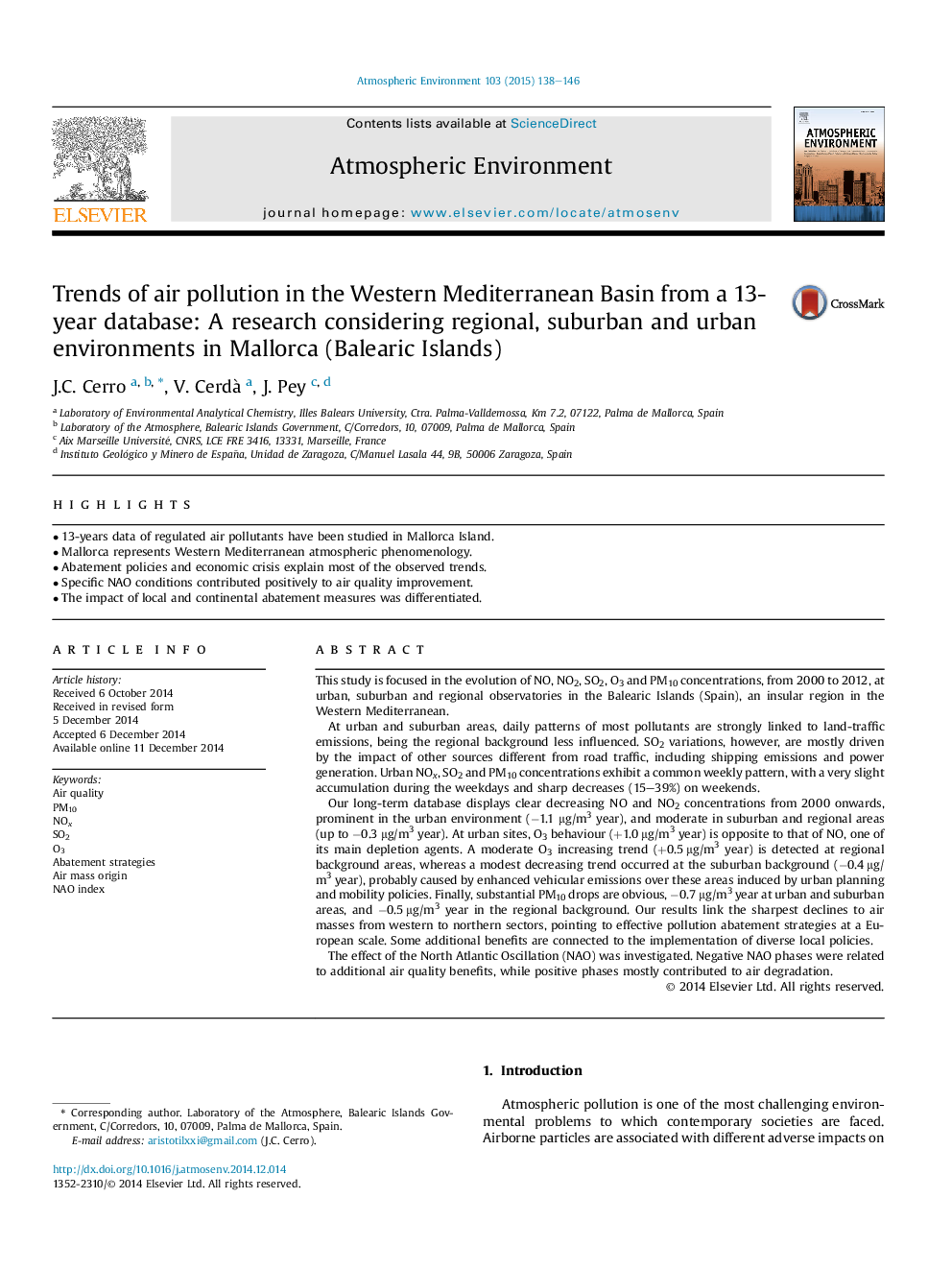| Article ID | Journal | Published Year | Pages | File Type |
|---|---|---|---|---|
| 6338500 | Atmospheric Environment | 2015 | 9 Pages |
â¢13-years data of regulated air pollutants have been studied in Mallorca Island.â¢Mallorca represents Western Mediterranean atmospheric phenomenology.â¢Abatement policies and economic crisis explain most of the observed trends.â¢Specific NAO conditions contributed positively to air quality improvement.â¢The impact of local and continental abatement measures was differentiated.
This study is focused in the evolution of NO, NO2, SO2, O3 and PM10 concentrations, from 2000 to 2012, at urban, suburban and regional observatories in the Balearic Islands (Spain), an insular region in the Western Mediterranean.At urban and suburban areas, daily patterns of most pollutants are strongly linked to land-traffic emissions, being the regional background less influenced. SO2 variations, however, are mostly driven by the impact of other sources different from road traffic, including shipping emissions and power generation. Urban NOx, SO2 and PM10 concentrations exhibit a common weekly pattern, with a very slight accumulation during the weekdays and sharp decreases (15-39%) on weekends.Our long-term database displays clear decreasing NO and NO2 concentrations from 2000 onwards, prominent in the urban environment (â1.1 μg/m3 year), and moderate in suburban and regional areas (up to â0.3 μg/m3 year). At urban sites, O3 behaviour (+1.0 μg/m3 year) is opposite to that of NO, one of its main depletion agents. A moderate O3 increasing trend (+0.5 μg/m3 year) is detected at regional background areas, whereas a modest decreasing trend occurred at the suburban background (â0.4 μg/m3 year), probably caused by enhanced vehicular emissions over these areas induced by urban planning and mobility policies. Finally, substantial PM10 drops are obvious, â0.7 μg/m3 year at urban and suburban areas, and â0.5 μg/m3 year in the regional background. Our results link the sharpest declines to air masses from western to northern sectors, pointing to effective pollution abatement strategies at a European scale. Some additional benefits are connected to the implementation of diverse local policies.The effect of the North Atlantic Oscillation (NAO) was investigated. Negative NAO phases were related to additional air quality benefits, while positive phases mostly contributed to air degradation.
